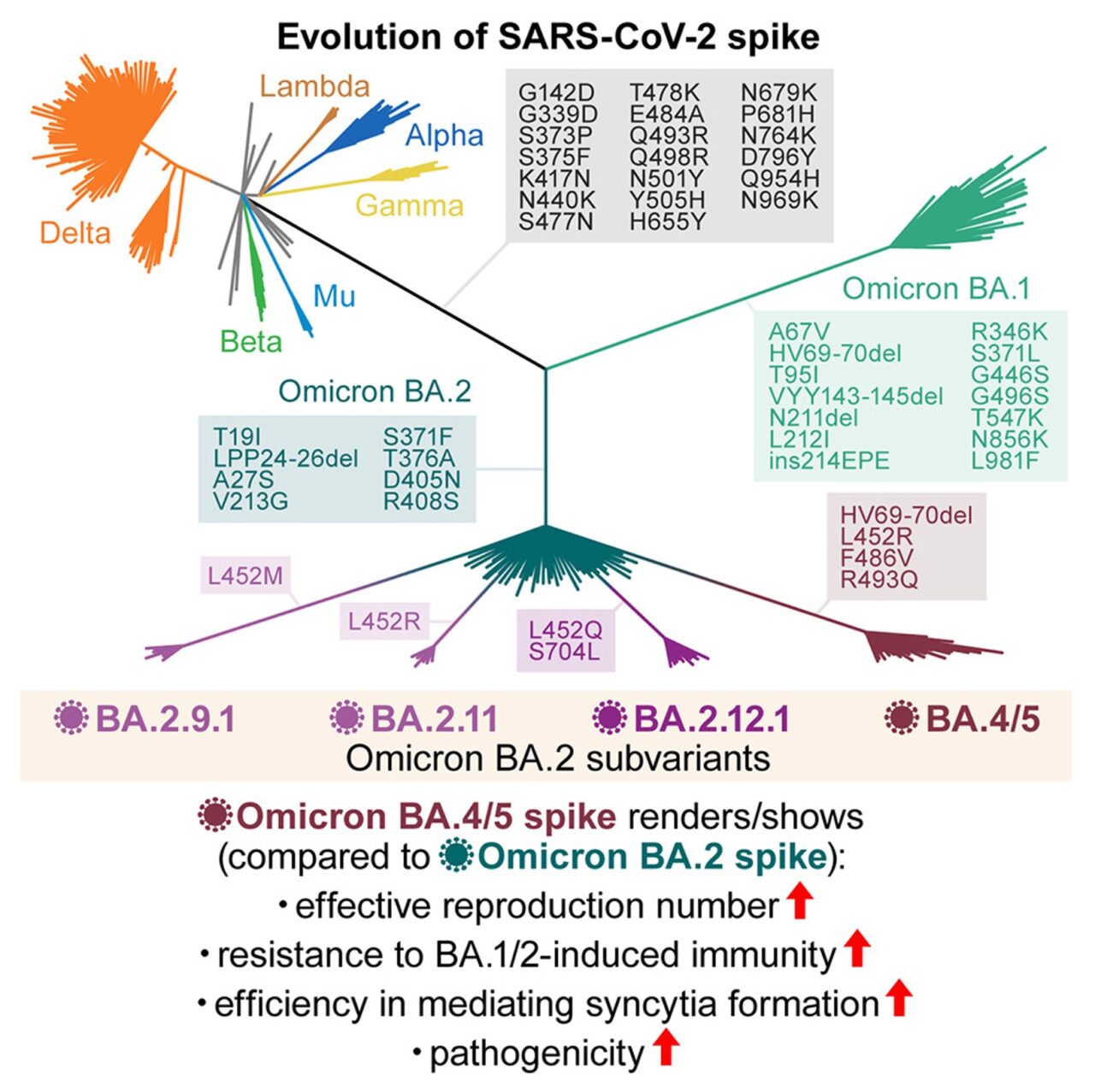Joint SARS-CoV-2 (COVID-19) virus research involving scientists from ICReDD has recently been published in the journal Cell. The study examines subvariants of the Omicron BA.2 variant. In particular, the BA.4/5 subvariants were shown to exhibit resistance to immunity induced from BA.1 or BA.2 infection and to monoclonal antibodies and immunity induced from 2-dose vaccination, and to a lesser extent, 3-dose vaccination. Additionally, tracing of subvariant emergence showed that BA.2 subvariants, including the BA.4 and BA.5 subvariants, had a higher effective reproduction number than the original BA.2 variant.
Experiments testing pseudoviruses that feature the S protein of the subvariants against immune samples from infected humans showed that BA.4 and BA.5 subvariants are more resistant than BA.2 to immunity induced from BA.1 or BA.2 infections. Samples from vaccinated patients showed that 3 doses of vaccine did provide some protection, but that BA.4/5 subvariants were more resistant than BA.2. Results from experiments in mice and hamster models supported these findings and suggested the BA.4/5 subvariants have different antigenicity from that of BA.2. Pathogenicity experiments in hamster models showed recombinant BA.4/5 infected hamsters had more severe lung disorders, suggesting BA.4/5 is more pathogenic than recombinant BA.2 in a hamster model.
Overall, the results of this study suggest that the risk to global public health is greater for BA.4/5 subvariants than the original BA.2.


